US military presence in Southeast Asia, and specifically Vietnam, had been increasing ominously throughout the early ’60s. In March 1965 Lyndon B. Johnson ordered the deployment of combat units for the first time, and the same month saw the start of ‘Operation Rolling Thunder’ — an air campaign against tactical targets in North Vietnam. Another significant escalation came just four months later — on July 28th — when, speaking in a black-and-white televised address from the east wing of the White House, President Johnson committed a further 50,000 US troops to the conflict, taking the total to 125,000. Demands would be met by conscription, with monthly draft calls rising from 17,000 to 35,000.
Over in Zürich, at their modest factory and shop premises, 55 Stocker Strasse, Joseph Ollech and Albert Wajs could not have anticipated the impact the announcement was about to have on their watch company. It was only a fortnight or so later that the first batch of mail orders started to arrive from the US. Ollech & Wajs had already built a solid customer base amongst US military personnel, but to receive this many orders — on a daily basis — was unprecedented. It was just the beginning of the deluge of business that was heading their way.
A good-quality, robust wristwatch was the only piece of civilian equipment that could legitimately be taken into the theatre of operations. OW military and sports watches were bought as gifts to loved ones, before deployment, as sentimental reminders of home — a small piece of Oklahoma, Wyoming or Tennessee to take to a far-off field and safeguard their owners’ return. It’s a popular misconception that all US servicemen were issued with wristwatches. In fact, most weren’t; and those that were soon found out that these so-called ‘Mickey Mouse watches’ were susceptible to water ingress in the intense humidity of South Vietnam and completely unserviceable once damaged. Many soldiers simply discarded their issued watches and purchased better-quality civilian dive and pilot watches through the official overseas US military base stores, known as PX stores. OW watches could be acquired, at a discounted rate, through these stores. Being ‘Swiss-made’, highly dependable and affordable, the watches became a PX favourite. Indeed, OW’s tagline at the time, ‘In the air — on land — under the sea’, could easily have been a regimental motto, embroidered on an insignia patch of one of the many units operating in Vietnam. Coincidentally, the tagline also reflected the three branches of the US military deployed in the region — the air force, the army and the navy. Our classic dive watches, like the famously sturdy ‘Aqua Guard’ with its 12-hour bezel and, of course, the peerless ‘Precision Caribbean 1000’, were particularly practical for waterborne operations. Both designed for use at extreme depths, where visibility was poor, their highly luminous dial layouts were also perfectly suited to conditions in the jungle. There are few places darker than the Mekong Delta at night, as any infantryman who patrolled there after sundown will attest.

OW created watches to honour specific military units, branches and ranks. The 101st Airborne Division, aka ‘Screaming Eagles’ (left). The 1st Infantry Division, officially nicknamed ‘The Big Red One’, with their motto ‘ No sacrifice too great — duty first’ (middle). The 1st Cavalry Division — ‘First Team’ — once served as a horseback cavalry division, hence a horse’s head insignia (right).

The 82nd Airborne Division, specialising in parachute assault operations — ‘Airborne all the way’ (left). The Army Aviator Badge is awarded to soldiers who have completed the necessary aircraft training (middle). The 2nd Infantry Division, guardians of the Korean Demilitarised Zone (DMZ) (right).
Another very popular model was the ‘Early Bird’, with its 24-hour ‘military time’ dial and rotating bezel, which enabled the wearer to track two time zones simultaneously. Originally developed to commemorate the first geosynchronous communications satellite it was marketed to navigators, pilots and radio operators. ‘Perfect for wet climates, mud and sea’, an advertisement in the Army Times claimed (these were certainly not environments that any pilots ever wanted to find themselves in). Although none of the OW watches were made to US military specifications, they were often relied upon in mission-critical situations and were perfectly suited to the task.

The US Airforce model B-905, with a silhouette of a Boeing KC-135 Stratotanker (left). The model A-905, United States Navy Officer rank insignia (right).
OW watches soon became hot property in Vietnam, and an unofficial secondary market inevitably popped up. The watches were often traded between soldiers in exchange for equipment or supplies, or put up as high-stakes collateral in card games. It wasn’t uncommon for a soldier coming to the end of rotation to pass his watch on to another member of his platoon staying for another tour. The same OW watch could, therefore, change hands multiple times. As one veteran and OW owner told us, ‘The two things every GI needed in ’Nam was a good watch and a Zippo lighter.’
 Credit: With kind permission AAFES©
Credit: With kind permission AAFES©

As US troop numbers rose to over 400,000 in 1966, reaching a peak of 549,500 in 1968, OW and our suppliers worked around the clock to meet the subsequent demand. And, when each watch left the sanctuary of the Zürich workshop, destined for what was then the most hostile place on earth, Joseph Ollech and Albert Wajs were confident the watches would be equal to the test ahead. Between 1965 and 73, tens of thousands of OW watches were shipped to PX stores on all major US military bases in the region. We know for certain that a good many made it safely back to the US.
 Interest from on high. An enquiry to OW from the US Army 4th Infantry Division HQ.
Interest from on high. An enquiry to OW from the US Army 4th Infantry Division HQ. 
The Vietnam War will forever be an integral part of our story, but more than that, it defines Ollech & Wajs, just as it defined the thousands of young soldiers who wore our watches.

